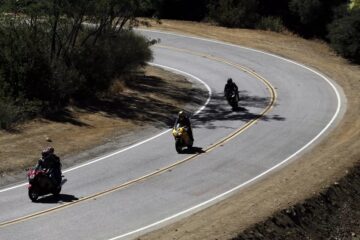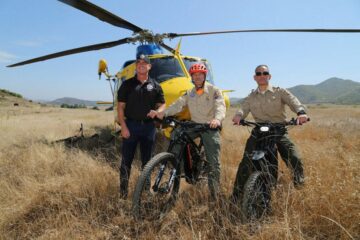Sound project on trail seeks to re-imagine the landscape
The artwork called Stroll uses audio devices erected along Santa Clarita’s South Fork Trail to emit an eclectic mix of field recordings, electronic sounds, the spoken word and performed music.
Source of this article: The Los Angeles Times, October 21, 2012
Users of a peaceful and popular Santa Clarita trail will soon be exposed to a “sonic intervention” as a new project designed to encourage passersby to linger and listen gets underway.
The endeavor, called Stroll, is a collaboration between the city of Santa Clarita and the California Institute of the Arts and uses audio devices erected along the city’s South Fork Trail to emit an eclectic mix of field recordings, electronic sounds, the spoken word and performed music.
“The goal is to create a work of art that allows for a re-imagining of the landscape by intervening into the public space with an unexpected interruption,” said Tom Leeser, director of CalArts’ Center for Integrated Media, whose students, faculty and visiting artists produced the project.

Dave Mickey, left, Cal Arts adjunct professor, and Warren Griffiths with the city of Santa Clarita install one of the sound devices along the South Fork Trail.
“Sometimes we ignore our surroundings and things that are right in front of us,” Leeser said. “This requires a kind of intervention from the art world that allows us to be in the moment and see something that might otherwise remain unseen. It changes our perspective.”
Stroll is part of a wider city program called “Common Spaces: Art in Public Places,” which seeks to “expose the public to a variety of art in a variety of venues,” said Jeff Barber, Santa Clarita’s arts and events supervisor. Other projects include placing oversize murals and eye-catching sculptures around the city and dispensing miniature works of original art from a vending machine.
The Stroll project consists of metal playback devices, similar to music boxes, that are suspended from tall poles. The solar-powered contraptions use an interactive sensor that determines which musical track is played based on a person’s proximity to the speakers and the individual’s height.
On Saturday, city workers erected six sound devices along a quarter-mile length of the trail, each between 80 and 100 feet apart. But their efforts to test the devices were foiled by overcast skies and drizzle.
Dave Mickey, the Center for Integrated Media faculty member who designed the appliance, said the top sensor is embedded at least six feet up the pole; the lowest is at about three feet. So a fully grown adult would probably trigger a different sound than a small child.
Each device contains five tracks that include a variety of digitally mixed sounds and music.
Leeser’s recordings included Tibetans chanting mantras in Katmandu, Nepal. Robin Sukhadia, now a graduate of the CalArts program, collected street sounds from Kolkata, India; and Kristín Pora Haraldsdottir documented poems from her native Iceland. Other sounds collected by the 21 project participants include traditional drumming from Rio de Janeiro and local folk music.
The idea is “to transport people to different parts of the world through sound,” said Barber, the city official.
It’s the “notion of using sound as a cultural exchange,” said Leeser. Most of the tracks are not high-fidelity recordings — a strategy intentionally used to cause people to try to figure out what they are hearing, Leeser said.
Saturday’s installation prompted curious stares and queries from walkers, runners and cyclists. Some asked whether the boxes contained surveillance cameras, Leeser said. Others joked about them being speedometers.
“I was hoping for lights,” said Dave McNeil, 65, as he paused to talk during a six-mile run. He approved of the project when given the details.
“I suppose it gets your mind off the pain,” McNeil said. “It will be something to look forward to when you’re running. Maybe it will get more people out running and exercising.”


